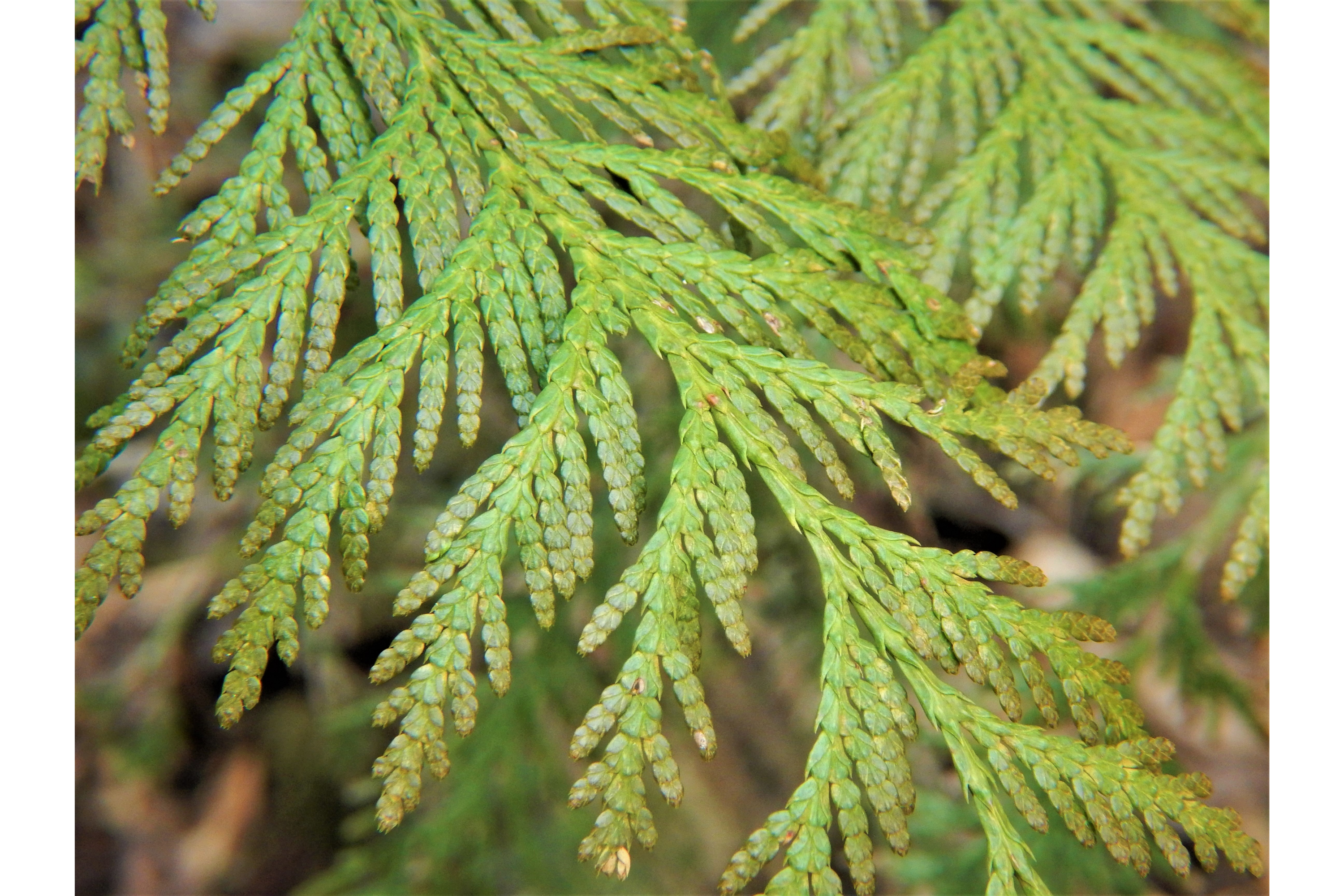Western redcedar
(Thuja plicata)

Description
Thuja plicata, commonly known as the Western Red Cedar, is a large, evergreen conifer tree that is native to the Pacific Northwest region of North America. It is a member of the cypress family (Cupressaceae) and is closely related to other Thuja species such as Thuja occidentalis (Eastern White Cedar) and Thuja koraiensis (Korean Thuja). This tree has significant economic and cultural value and is used for a variety of purposes ranging from ornamental landscaping to construction material. In this article, we will explore the various aspects of Thuja plicata, including its physical characteristics, habitat, distribution, cultivation, uses, and ecological significance. Physical Characteristics: Thuja plicata is a large tree that can grow up to 70 meters in height and 5 meters in diameter. It has a straight, cylindrical trunk that can reach up to 40 meters in length. The tree's bark is reddish-brown, fibrous, and scaly, and it becomes thicker and more deeply furrowed as the tree ages. The leaves of the Western Red Cedar are arranged in opposite pairs and are scale-like, with a green to yellow-green color. The tree produces both male and female cones, with the male cones being yellow and the female cones being green. The cones mature in the fall and are about 1.5 centimeters in length. Habitat and Distribution: Thuja plicata is found primarily in the Pacific Northwest region of North America, including the coastal areas of Alaska, British Columbia, Washington, Oregon, and northern California. It is typically found in moist, low-elevation forests and riparian zones, and it thrives in soils that are rich in nutrients and moisture. The Western Red Cedar can grow in a range of environmental conditions, including areas with high precipitation, moderate temperatures, and low light. Cultivation: Thuja plicata is a popular tree for cultivation and is commonly used in ornamental landscaping. It is relatively easy to grow and is tolerant of a wide range of environmental conditions. The tree prefers well-drained soils that are moist and rich in organic matter, and it requires moderate to high levels of sunlight. Propagation can be achieved through seed germination or through vegetative methods such as cutting and layering. Uses: Thuja plicata has a long history of use by Native American tribes in the Pacific Northwest region. The tree's bark and wood were used for a variety of purposes, including basketry, clothing, and shelter construction. The wood of the Western Red Cedar is highly valued for its durability, strength, and resistance to decay and insect damage. It is used in a variety of construction applications, including roofing, siding, decking, and fencing. The tree's essential oil is also used in perfumes and other cosmetic products. Ecological Significance: Thuja plicata plays an important role in the ecology of the Pacific Northwest region. The tree provides habitat for a variety of animal species, including birds, mammals, and insects. It also helps to stabilize soils, prevent erosion, and regulate water flow in riparian zones. The Western Red Cedar is also important for carbon sequestration, as it can absorb and store large amounts of carbon dioxide from the atmosphere. Conclusion: Thuja plicata, or the Western Red Cedar, is a remarkable tree with significant cultural, economic, and ecological value. It is a beautiful and versatile species that can thrive in a variety of environmental conditions and has a long history of use by indigenous peoples in the Pacific Northwest region. The tree's durable and decay-resistant wood is highly valued for its strength and versatility, and its essential oil is used in a range of cosmetic products.
Taxonomic tree:







